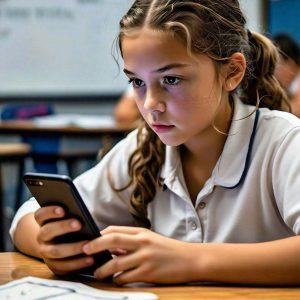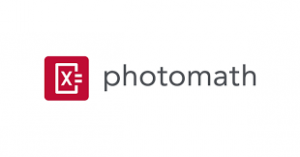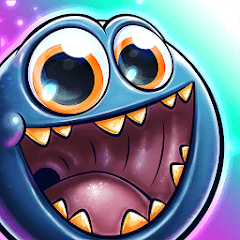Starting Uni/College life is a massive deal for all boys and girls out there.
It is exciting and thrilling to think of the new life ahead of you, but this might also make you feel a little nervous and wonder about all the things you will need to carry along with you on this journey. As per the latest UK student statistics, 2.2 million new students will require accommodation within 2026.
Life will be bittersweet at college or university, but something can be a little easier for you if you have the proper companions with you in your dorm room that would save you from last-minute hassles.
This guide will provide you with the ultimate list of affordable dorm room essentials that are a must-have for all the students who are starting their new life at college or university, and obviously, we have made this list as pocket-friendly as possible.
Disclaimer: The information shared in this post was correct at publication but may be subject to change. All the products in this list have been ranked on the basis of cost from lowest to highest. We have added product links from Amazon as the platform offers very competitive deals and an easy shopping experience, but you can also purchase these products directly from the seller of your choosing.
1. Undated Planner

Being a student is no joke! With everything from class assignments to project submissions, it’s easy to feel overwhelmed. That’s where a planner is handy, ensuring you meet all the critical deadlines. Plan your week or month to avoid those pesky schedule clashes, like your hot date overlapping with that science seminar you registered for months ago. Opt for an undated planner with gorgeous illustrations and dedicated sections for meal plans, your top three priorities, and even your water intake. With plenty of space for notes, it’s the perfect tool to keep your day organised and stress-free. Say goodbye to chaos and hello to a more manageable college life!
2. Photo Clip String Lights

Transform your dorm into a festive wonderland with photo clip string lights! These fairy lights aren’t just for illumination—they’re a mood. Battery-operated and colour-changing, they adapt to your every whim. Use the attached clips to showcase your favourite pics, whether family, friends or your latest adventure.
3. Alarm Clock

Morning classes are the toughest for students, but an alarm clock can ensure you’re always on time. Think of it as your mom away from home, waking you up every day without fail. Choose from various designs and alert tones to find the perfect one that suits your style and gets you out of bed.
4. New Bed Sheets

What’s the first thing that makes us fall in love with a hotel room? Those crisp, inviting bed sheets beckon us to dive straight into comfort and luxury! The same goes for a dorm room, which will be your home for the upcoming semesters. Investing in clean cotton bed sheets is one of the best and most economical ways to enhance your room’s look and feel. While there are various materials, cotton reigns supreme for its comfort. Opt for classic white to keep things neutral and chic, or go for vibrant colours to add a pop of personality to your room. With the right bed sheets, you’ll feel like sleeping in a five-star hotel every night!
5. Cutlery Set

This cutlery set is so useful, and it comes in handy even though you may think you won’t need it, you will do it. It caters to all your needs and gathering moods. Want to have some Asian food? There are your chopsticks. Want to have a proper elite meal? There are all types of spoons and forks. A cutlery set is all the tableware you need, and these are also very travel-friendly and light.
6. Bulletin Board

Want to stay organised during your college years? Get a bulletin board! It’s like having your mini-announcement board right in your room. Stick up everything from ‘To-Do’ lists and exam timetables to pictures of your loved ones. Are you sharing a room? A bulletin board is the perfect place to leave messages for your roommates. Stay on top of everything and keep your space looking neat and personalised!
7. Makeup Organiser

If your dorm is spacious, you just probably got lucky, but that is not the case in most instances. Makeup organisers prove to be a boon and are one of the most common dorm room essentials for girls. It is an excellent way to keep your things organised so that you will not find them lying here and there and you will not end up losing them. These are super cheap and effective too for other accessories like jewellery or stationery.
8. Compact Party Speaker

Are you tired of the tinny sound from your laptop or phone? Upgrade to a compact speaker and bring the beats to your dorm. Modern speakers offer crisp sound and enough bass to keep the party going. Look for ones with long battery life and LED lights to enhance your party atmosphere. Let the good times roll!
9. Blackout Curtains

If you are a light sleeper and can quickly wake up when the morning sunlight hits your room, then blackout curtains will save you every day. You need to make sure to have a good sleep at college because that is the least you can ask for to keep going with the hectic student. These blackout curtains will be your sleep saviour, and you might get used to using these even after your college days are over.
10. Desk Lamp

You can never forget a light as this is essential for every student. You need a lamp at your study desk because that is where you will spend most of the time before your exams. You will need a good lamp that will light up your study table enough for you to study for hours without any inconvenience.
11. Slippers

You will need these to keep yourself warm and keep your feet off the nasty dorm room floors. We all know that dorm room floors are very messy, and these slippers are just way too cosy and comfortable rather than your feet touching the cold, dirty floor all the time. These can be considered dorm room essentials for boys and girls, depending on the style of course.
12. Stainless Steel Water Bottle

Stay hydrated with a stainless steel water bottle that matches your dorm room vibe. These bottles come in cool patterns and have insulated coatings to keep your drinks hot or cold for hours. Plus, you can choose from fun lid options like chug lids and straw lids. Hydration has never looked so good!
13. Laundry Basket

You will surely need one or two of these because it will be a bothersome job for you to carry your clothes from your dorm room to your laundry room. These bags are easy to carry and are stylish too. They can hold a lot of your clothes and are an environmentally-friendly option.
14. Storage Cubes

Storage cubes are pretty aesthetic, and they hold in a lot more things than you think they will do. They can be used as TV stands or bedside tables too. So, why not get one of these?
15. Non-slip Hangers

You do not want your clothes falling off from your hangers, and landing on the ground, and these non-slip hangers prevent it from happening. If you are a freak for cleanliness and organisation, this will be your lifesaver.
16. Extension Cord and Power Strip

These are some of the most underrated and cheap dorm room essentials, and they will prove to be very helpful for you once you get your hands on them. Your dorm room may or may not have a lot of plug-points. You will have only two to three plug-points at max, and we assure you that you will need more than that. The extension cord and power strip are convenient because you can also put USB cords into them.
17. Cosy Bedroom Rug

Nothing beats the comfort of a soft, shaggy rug in your dorm room! Imagine relaxing with your favourite novel after classes or lying down with a tub of popcorn for a Netflix binge. A rug made of non-shedding fur gives you that luxurious feel underfoot. Plus, with a non-slip bottom, it stays perfectly in place. Available in a variety of colours and sizes, you can easily find the perfect fit for your space. Your dorm room just got a whole lot cosier!
18. Stackable Trash Cans

Stackable trash cans cannot not be on the list of dorm room essentials. It just must be there to keep your room clean and non-smelly while not being in the way.
19. Storage Ottoman

This multi-purpose dorm room essential can help you out with many things. You can store clothes or any other stuff in this, and this will also provide you with extra seating space in the room. It will also not occupy much of your dorm room space. We strongly recommend having it in your dorm space, and it is super cute and affordable.
20. Towel Wrap

You will certainly need these because most dorms have communal bathrooms, and you will have to carry everything with you from your room to the communal bathroom, without little to no privacy here. And you do not want to embarrass yourself with your towel falling off in the student hall, especially if you are in a co-ed dorm – unless of course, it attracts the right attention.
21. Over-the-Door Mirror

You must have this in your dorm. This is essential and will also not take up much of the space in your dorm room. You can have a good look at your outfit before you leave for a night out with your friends or a party and these mirrors look oh-so-aesthetic in your dorms.
22. Garment Fabric Wrinkles Remover

Do you have a seminar to attend, but your wrinkled blazer is playing spoilsport? Don’t let wrinkles come in the way of your success. Get a wrinkle remover that features detachable attachments like a soft brush, a lint brush, and a creaser for that fabulous look time and again.
23. Bed Shelf

A mini-bed shelf will be able to hold all your essentials starting from your laptop, mobile phone, books, and anything else that you prefer to keep around you by your bed. You do not have to carry the things to their respective places and can keep them beside you on these shelves when you doze off to sleep after a long and tiresome day. These are cheap and fancy and, to be honest, super cute.
24. Sound Machine

All light sleepers must get this for themselves. Your dorm room will not just be for you, you will have roommates, and you cannot always expect them to keep quiet. This sound machine blocks off all the external noise, and this will not just be useful for light sleepers but is also a dorm room essential for literally everyone because you can use this while studying.
25. Mini Vacuum Cleaner

Oh yes, we all need a clean dorm room, and yes, we cannot have substantial vacuum cleaners because they take up too much space, if your dorm room is not a huge one, then these mini vacuum cleaners will save the day for you. Some dorms offer vacuum cleaners, and some do not. However, if they provide you with a vacuum, they are ancient and do not serve the purpose. So, it is better to keep a mini vacuum cleaner handy, especially after those late-night parties.
26. Dinnerware set

You must always have your own set of bowls and plates as at university often stuff gets mixed up among roommates. Honestly, it is a lot more hygienic too. So, this needs to be in your dorm room essentials checklist.
27. Lap Desk

Youth is about living your best life, not complaining about shoulder and back aches. Enter the lap desk! This handy tool lets you work from your couch, bed, or chair without sacrificing comfort. Look for one with a phone slot, mouse pad, and dual-bolster cushion. Plus, with so many colours, it can be a stylish addition to your dorm room. Say goodbye to discomfort and hello to productivity!
28. Fluffy Pillows

Sleeping well is vital to feeling fresh and ready to conquer the day. And let’s not underestimate the power of a fluffy pillow in ensuring you get the rest you deserve. Nowadays, you can even opt for orthopaedic options that promise the ultimate comfort and ensure you wake up pain-free. Treat yourself to a pillow that supports your neck and spine while enveloping you in fluffy bliss. Say goodbye to restless nights, and hello to sweet dreams!
29. Mini Fridge

If you want to store some drinks or keep the veggies and fruits fresh, you will need that mini-fridge in your dorm because it will significantly help you if you are a fitness freak.
30. Amazon Fire Stick

All work and no play? No way! With an Amazon Fire Stick, your downtime becomes a blast. Have you got a TV in your dorm? Just plug in the Fire Stick, and boom—your TV is now a smart console. Dive into YouTube, binge on Netflix, explore Hulu, and more. Endless entertainment is just a click away!
31. Mini Keurig

You are surely going to become a coffee lover at college. It does that to you. Night after night, you will be spending your time with a bunch of books and a cup of coffee, and it will become your morning essential too. So, having a mini-Keurig will prove very useful for you because caffeine will be the only thing to keep you going through college or university.
32. Microwave

Do you have the green light to keep a microwave in your UK accommodation? Sweet! This little gadget is more than just a food heater—it’s your ticket to whipping up mini meals and delicious cupcakes in your room. Just follow the presets and enjoy culinary delights at your fingertips!
33. Futon

A futon is the fanciest thing you can get, and it will change the look of your entire dorm room and instantly add a classy, glamorous touch to your dorm space. The best part about it is it will be your perfect hangout spot whenever your friends visit you in the dorm. We suggest you get a fake leather futon because it is easier to clean.
Now you’re ready for Dorm Life
The above-mentioned items should be on the list of all the dorm room essentials you should get to make it through college or university. They will make your hectic life a little more hassle-free and more accessible. Make sure to add these top cheap dorm room essentials to your dorm room essentials checklist before heading off.
If you want us to add a suggestion here based on your experience, please get in touch with us!
























































































